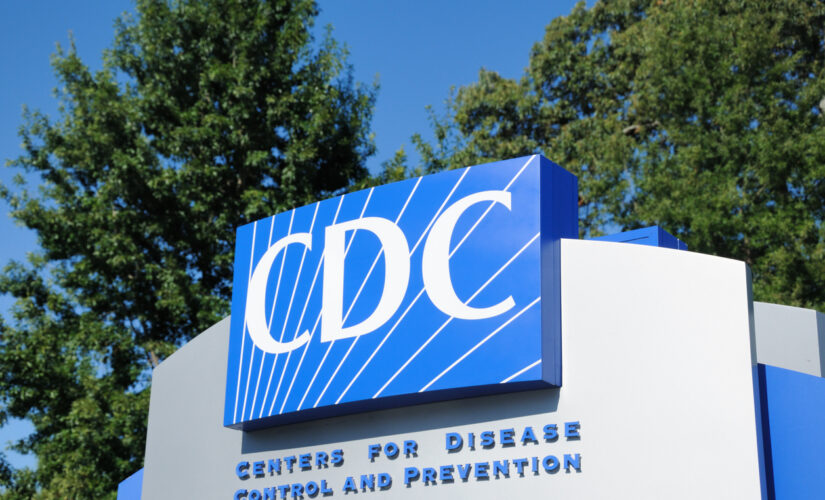NEWYou can now listen to Fox News articles!
In response to the current pediatric hepatitis outbreak possibly linked to adenovirus, the Centers for Disease Control and Prevention (CDC) found current data do not suggest an increase in pediatric hepatitis cases or adenovirus types 40/41 from the time the outbreak began compared to pre-COVID-19 pandemic levels, according to a recent Morbidity and Mortality Weekly Report.
“Data from four large administrative databases were analyzed to assess trends in pediatric hepatitis and percentage of stool specimens positive for adenovirus type 40/41,” the CDC said.
“Although this ecologic analysis cannot conclusively confirm or refute a potential association between pediatric hepatitis and adenovirus, it provides useful context for the ongoing investigation.”
The CDC compared data during the current hepatitis outbreak period from October 2021-March 2022 with a pre-COVID-19 pandemic baseline, because health care-seeking behavior may have changed during 2020-21 in response to the pandemic.
Atlanta, Georgia, USA – August 28, 2011: Close up of entrance sign for Centers for Disease Control and Prevention. Sign located near the 1700 block of Clifton Road in Atlanta, Georgia, on the Emory University campus. Vertical composition.
(iStock)
EXERCISE PILL? RESEARCHERS IDENTIFY MOLECULE IN BLOOD PRODUCED DURING WORKOUT
After pediatric cases of hepatitis starting being identified in the United States and the United Kingdom that did not have a clear etiology, CDC issued a healthy advisory in April 2022 to report additional cases.
They found many of the reported cases also had tests results positive for adenovirus type 41, a virus known to cause gastroenteritis, but not known to cause hepatitis in children with an intact immune system, per the agency.
“Because neither acute hepatitis of unknown etiology nor adenovirus type 41 is reportable in the United States, it is unclear whether either has recently increased above historical levels,” the CDC said.
So the agency analyzed data from four sources: the National Syndromic Surveillance Program (NSSP), the Premier Healthcare Database Special Release (PHD-SR), the Organ Procurement and Transplant Network (OPTN), and Labcorp.
NSSP collects electronic health information from emergency departments across every U.S. state and the District of Columbia, representing 71% of nonfederal emergency rooms in the United States.
Pediatric Cardiologist Ryan Serrano, right, talks with his patient, Richard Barnes, left, and his father Steve Barnes, during an exam Thursday, March 11, 2021, at Riley Hospital for Children. PHD-SR included records from approximately 1,000 hospitals while pediatric liver transplant data was obtained from the national registry, which is managed by OPTN.
(Fox News)
PHD-SR included records from approximately 1,000 hospitals while pediatric liver transplant data was obtained from the national registry, which is managed by OPTN.
Labcorp data included results for stool specimens tested for adenovirus types 40/41 but could not distinguish if the type was type 40 or 41, but the CDC noted approximately 90% of all adenovirus cases detected in the U.S. with gastroenteritis are type 41.
There was no significant difference in hospitalizations associated with hepatitis or pediatric emergency department visits during the period of the outbreak during October 2021through March 2022 compared before the COVID-19 pandemic.
There was also no significant increase in number of monthly liver transplants or increase in the percentage of specimens positive for adenovirus types 40/41 during October 2021-March 2022 compared with pre-pandemic levels.
But the United Kingdom did report an increase in the number of stool specimens positive for adenovirus among children 1 to 4 years old compared with pre-pandemic levels, but the agency noted data on total specimens tested in the U.K. is unavailable so true percentage of the specimens positive for adenovirus is unknown.
Britain’s Prime Minister Boris Johnson leaves 10 Downing Street as he makes his way to the House of Commons, in London. The United Kingdom did report an increase in the number of stool specimens positive for adenovirus among children 1-4 years old compared with pre-pandemic levels, but the agency noted data on total specimens tested in the U.K. is unavailable
(AP/Alberto Pezzali)
The CDC reports the data has limitations because the analysis assessed trends of hepatitis indirectly through electronic health data because the hepatitis cases without a clear cause are not reportable in the United States, so an exact baseline is unknown currently.
TEXAS CHILDREN’S HOSPITALS HELPS FIGHT BABY FORMULA SHORTAGE WITH MILK BANK DONATION SITES
They also note because even though liver transplants are “well documented,” there is a two to three month delay period of reporting, so March 2022 data might be underreported.
Additionally, because the COVID-19 pandemic likely altered health seeking behavior, the pre-pandemic data are limited to 2017-2019, and it’s unknown if this data is an accurate baseline.
CLICK HERE TO GET THE FOX NEWS APP
The CDC also noted the small sample size may make it difficult to determine small changes in incidence because the hepatitis cases are rare.
“Finally, these results are intended to provide an overview of trends in pediatric acute hepatitis of unspecified etiology and adenovirus types 40/41 in the United States and cannot be used to infer or disprove a causal link between these two illnesses.”




